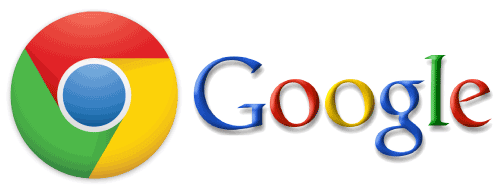Introduction to Chromelearning manual
Published on 2023-04-20 00:10:05 · 中文 · بالعربية · Español · हिंदीName · 日本語 · Русский язык · 中文繁體
What is Google Chrome?
Similar issues:
What is Chrome?
What is Chrome OS?
Chrome definition
Google Chrome is one of the most famous and globally used web browsers of our time. It is a cross-platform browser developed and launched in September 2008. Initially, it was released specifically for Windows, but later it was available for Linux, MacOS, iOS, and Android. Chrome designs and writes scripts using different programming languages, such as C, C++, Java, JavaScript, and Python.
It is free software and is available for everyone to download and use. It is a FOSS (Free and Open Source Software), so its source code remains completely transparent. Anyone willing to modify, use, or study the source code is welcome.

Why is Chrome popular?
Chrome is popular because its features overcome most browsing problems. It offers features like bookmarks and settings syncing, enabling sync by linking Google accounts, and helping maintain security with password management, malware blocking, and more. It also operates through its incognito mode, where browsing is not tracked or shown in history. Chrome browser has its own task manager that allows you to see the memory and CPU usage of each tab/plugin. You can open it by clicking Shift-Esc in Chrome.
The ease of use and hassle-free fast browsing offered by Google Chrome make it the most popular browser on the web, with a market share of about 68% of browser-PCs worldwide. Extensions are another very useful tool to extend the use of Chrome. Therefore, it is an easy-to-use, fast, and secure browser.
What is Chrome OS?
Chrome OS is an operating system that works on the Internet, and it was designed by Google itself. Chrome OS is based on Linux kernel technology. Linux-Kernel is an open-source operating system that runs on large-scale work devices with Internet connectivity. The user interface used by Chrome OS is Google Chrome, originally acquired from Chromium OS, and also free.
The Chrome OS development project was announced in July 2009. The plan is designed so that data at both ends, users and applications, will be stored on the cloud. This means that it will essentially run a web application. The first device to use Chrome OS as its operating system was a Chromebook. A Chromebook is a netbook, a small laptop with limited features and low price for accessing the web. It was launched in May 2011 and is mainly shipped by brands such as Samsung and Acer.
Initially, it only supported Chrome apps, but since 2004, the operating system also allows the use of Android apps. It has a unified file manager and media player. Along with these developments, Project Crostini was also released as part of the stable version of Chrome OS 69. After this release, Chrome OS began to support Linux terminals and applications.
Chrome OS uses different programming languages to write scripts, such as C, C++, JavaScript, HTML5, Python, and Rust and their kernel types are monolithic.
The idea of creating Chrome OS stemmed from the web-centric computing trend that had been following since the 1990s. Traditional operating systems require a lot of work in terms of time and storage complexity. Managing and securing the operating system, while keeping it updated and handling its drivers, is some work. Chrome OS transforms this traditional design of the existing operating system. Overall, Chrome OS is developed based on open-source Linux-Kernal technology combined with Google Chrome, a media player and file manager.
Features of Chrome OS
Chrome OS has some of the unique attributes discussed below:
Easy to set up - It's easy to set up or switch to a Chromebook if someone has been using Chrome apps like Google Docs, Google Photos, and Google Drive, among others. Users only need to have a login browser to access.
Smart Search - With Google's power, you can search for almost anything on your Chromebook device. Whether browsing files, apps, or web history, all of this is done very conveniently by simply tapping the "Search" button on your keyboard.
Hypersync - Chrome OS extends the ability to sync through Google Chrome. The operating system records activity tags, remembered passwords, bookmarks, and searches by continuously synchronizing during the activity.
Fewer storage requirements - Chrome OS is designed to support cloud computing technology, where data from both the sender (user) and receiver (application) is stored in the cloud.
Fast Response - Even when working with multiple tabs or streaming HD videos, Chrome OS is very responsive and won't keep you waiting.
Automatic updates- Chrome OS does not require any time or space to run the update process. Users always use the latest version of the operating system without hindering the current workflow.
Layered security - Chrome OS provides a very secure working environment. It provides multiple layers of security by using Google Secure Chip – which encrypts the most valuable data on your Chromebook. Sandboxing - Used to distinguish between important and normal functions. It provides exclusivity for important features and helps protect them from virus attacks. Secure sharing - Even if you share the same system, you can still have your own space and storage space because Chrome OS allows multiple accounts.